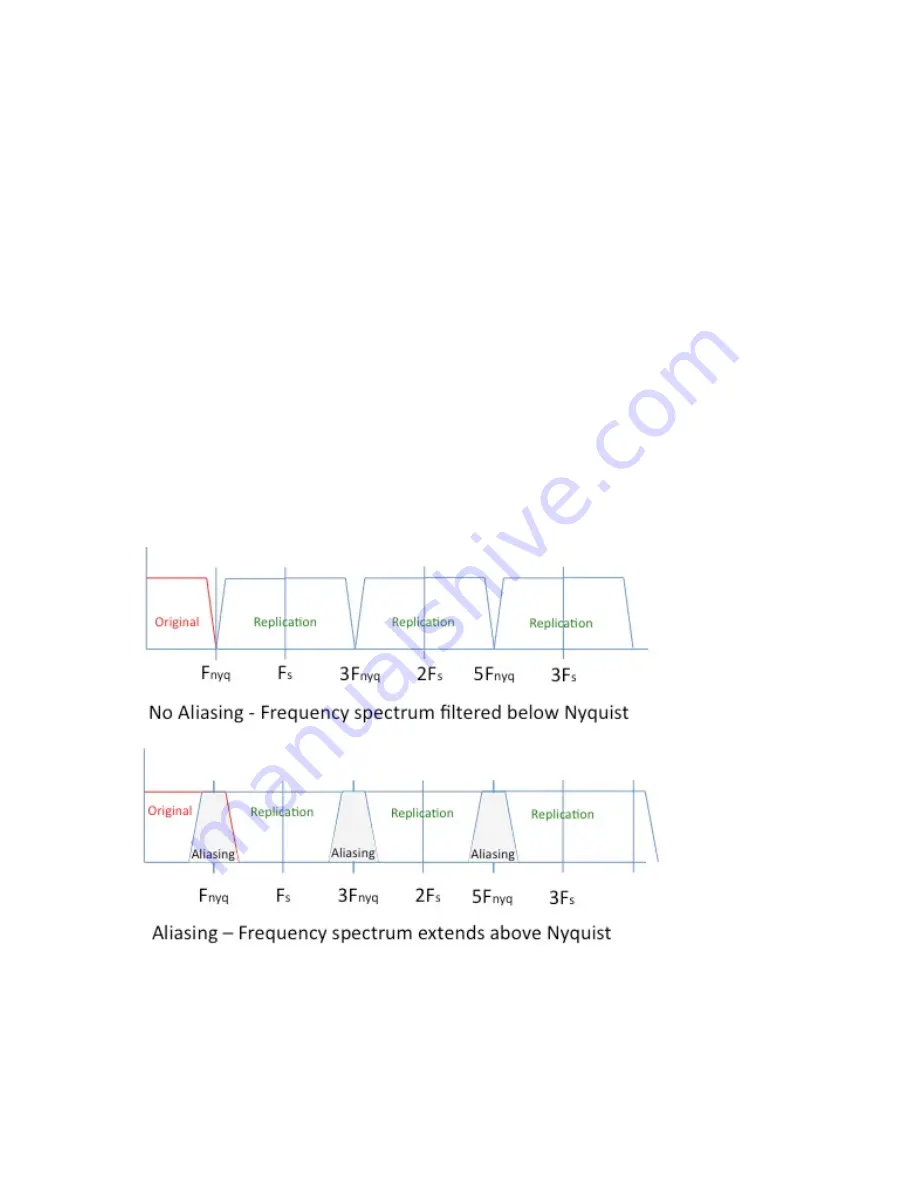
DGA-6000 ULTRA-HD VIDEO GENERATOR / ANALYZER USER MANUAL
B-8
total number of horizontal lines (of pixels) per picture height (Lines/PH). The horizontal and vertical spatial
sampling frequencies plus the picture rate (temporal sampling frequency) define a digital video structure.
Nyquist Frequency –
The highest spatial frequency that can be rendered in a sampled image occurs when
adjacent pixels (or adjacent lines) alternate between light and dark intensities. That maximum spatial
frequency is known as the Nyquist frequency. At the limit, it takes two pixels per cycle to represent the
maximum spatial frequency, so the Nyquist frequency is one-half of the spatial sampling frequency.
For instance, a 1080p video format consists of 1920 pixels per picture width (PW) and 1080 (horizontal)
lines (of pixels) per picture height (PH). Therefore, the horizontal sampling frequency is 1920 pixels/PW, and
the vertical sampling frequency is 1080 lines/PH. However, the highest spatial frequency (smallest detail)
that can be produced in the image requires at least a pair of light and dark pixels. Therefore, the horizontal
Nyquist frequency of a 1080p image is 960 cycles per picture width (C/PW) - one-half of the horizontal
spatial sampling frequency. The vertical Nyquist frequency is 540 cycles per picture height (C/PH) - one-half
of the horizontal spatial sampling frequency.
Frequency Replication & Aliasing –
The frequency spectrum of sampled signals (e.g. digital video) is
replicated as a series of mirror-imaged frequency spectra pairs centered at integer multiples of the sampling
frequency (Fs). Unless the display (or video processor) filters the spatial image frequencies below the
Nyquist frequency (Fnyq), the frequency spectra will overlap creating beat-frequencies (aliases) that are
most visible around the Nyquist frequency. (See the accompanying diagram.) The replicated frequency
spectra and aliases are clearly visible in full-field Zone Plates.
If a display includes low-pass spatial frequency filtering (for scaling, overscan, or other video processing
functions) the visibility of low-frequency aliases will be reduced, even though the filtering only affects the
high-frequency components that produce the aliases. For demonstration purposes, the DGA-6000 Slow
Edge filter (a digital horizontal spatial filter – not available for 2160p motion patterns) can be temporarily
enabled to observe the aliasing reduction effects of low-pass filtering, but be sure to disable the Slow Edge
filter when using the motion patterns to actually test displays or processors.




































